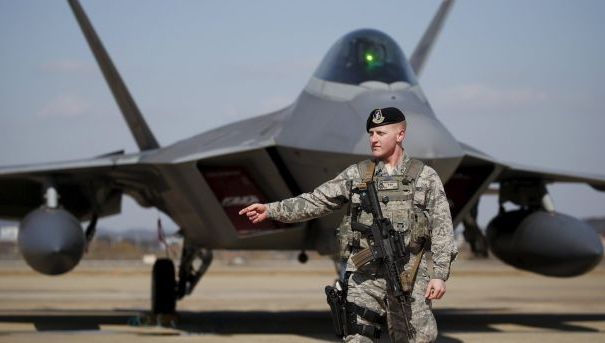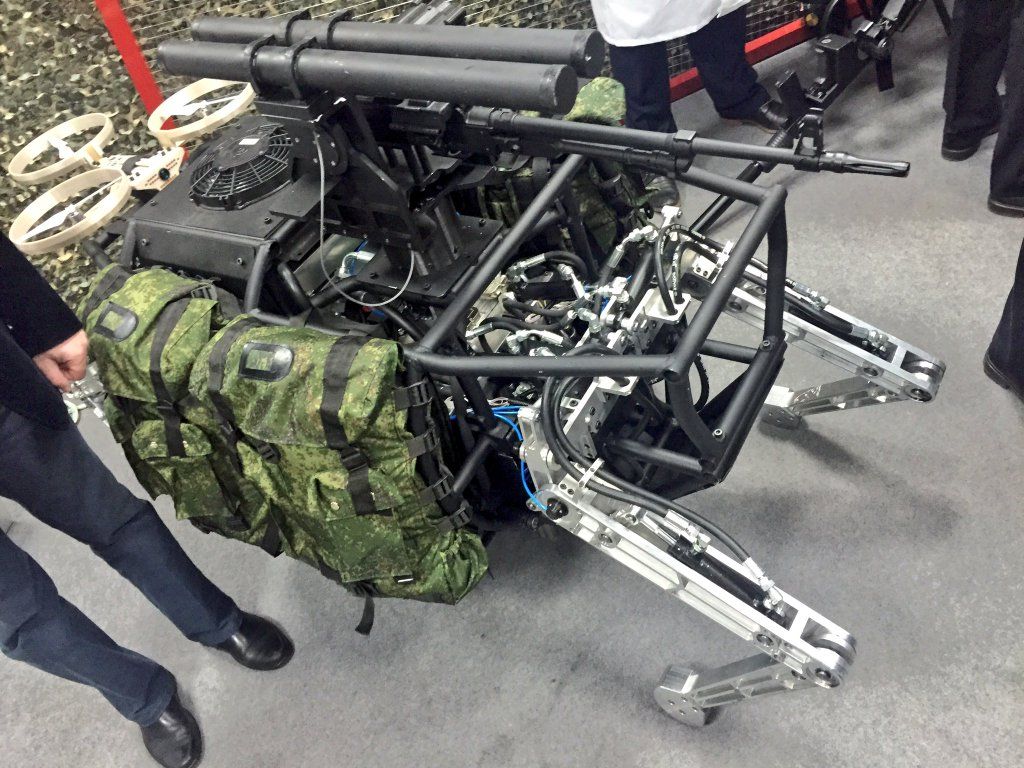The US Air Force had flying saucers.
Category: military
Cool
The Army and Marine Corps’ next-generation ground combat vehicle could be designed to avoid threats rather than withstand them.
To that end, eight organizations received contracts from the Defense Advanced Research Projects Agency to join the Ground X-Vehicle Technology program, where DARPA intends to create a nimble, go-anywhere conveyance that will be hard for enemies to find or catch.
Terms of the early-stage research contracts weren’t disclosed. A 2014 solicitation offers up to $27.4 million for “Technology Development” over two years.
Don’t kill the messanger; I’m just sharing.
Yesterday Trump acknowledged the power of technology to help the USA in his future plans.
In a major foreign policy speech, yesterday, Republican presidential candidate Donald Trump said the U.S. needs to make better use of “3D printing, artificial intelligence, and cyberwarfare.”
“We need to think smarter about areas where our technological superiority – and nobody comes close – gives us an edge,” he explained. “This includes 3D printing, artificial intelligence, and cyber-warfare.”
Hmmm; I guess the government needs to change its mode of operations. I believe that everyone has been saying this for a while now.
Technology companies are moving too fast for governments to keep up, according to a former chief of the US Defense Advanced Research Projects Agency (DARPA).
Kaigham (Ken) Gabriel was acting director of DARPA and the man behind drone technology and global positioning satellites, as well as the military’s top secret, high-tech operation responsible for inventing the forerunner to the internet, Arpanet.
He believes governments are fighting a losing battle with technologies such as encryption. But, when it comes to the possibility of advanced tech falling into the wrong hands, he doesn’t believe western governments should give up altogether.
“Through Squad X, we want to vastly improve dismounted squad effectiveness in all domains by integrating new and existing technologies into systems that squads can bring with them,” said Maj. Christopher Orlowski, DARPA program manager. “The squad is the formation with the greatest potential for impact and innovation, while having the lowest barrier to entry for experimentation and system development. The lessons we learn and the technology we create could not only transform dismounted squads’ capabilities, but also eventually help all warfighters more intuitively understand and control their complex mission environments.”
Squad X intends to combine off-the-shelf technologies and new capabilities under development through DARPA’s Squad X Core Technologies (SXCT) program, which was launched specifically to develop novel technologies that Squad X could integrate into user-friendly systems. SXCT shares Squad X’s overarching goal of ensuring that Soldiers and Marines maintain uncontested tactical superiority over potential adversaries by exploring capabilities in four areas: precision engagement, non-kinetic engagement, squad sensing and squad autonomy. In an important step toward that goal, SXCT recently awarded Phase 1 contracts to nine organizations.
The U.S. Army, U.S. Navy and U.S. Marine Corps have expressed interest in future Squad X capabilities and plan to support the experimentation efforts with testing in simulated operational environments as the program progresses.
Supercomputer facing problems?
In the world of High Performance Computing (HPC), supercomputers represent the peak of capability, with performance measured in petaFLOPs (1015 operations per second). They play a key role in climate research, drug research, oil and gas exploration, cryptanalysis, and nuclear weapons development. But after decades of steady improvement, changes are coming as old technologies start to run into fundamental problems.
When you’re talking about supercomputers, a good place to start is the TOP500 list. Published twice a year, it ranks the world’s fastest machines based on their performance on the Linpack benchmark, which solves a dense system of linear equations using double precision (64 bit) arithmetic.
Looking down the list, you soon run into some numbers that boggle the mind. The Tianhe-2 (Milky Way-2), a system deployed at the National Supercomputer Center in Guangzho, China, is the number one system as of November 2015, a position it’s held since 2013. Running Linpack, it clocks in at 33.86 x 1015 floating point operations per second (33.86 PFLOPS).
Lookout world; could we see WWIII?
A US KC-135 refuelling plane flew with the two F-22 Raptor fighters from Britain to Romania’s Mihail Kogalniceanu air base on the Black Sea.
“The increased size of the 2016 deployment… allows U.S. Forces to assert their presence more widely across the eastern frontier”, said U.S. Air Force spokeswoman Major Sheryll Klinkel.
“We’re here today to demonstrate our capability to take the F-22 anywhere needed in North Atlantic Treaty Organisation or across Europe”, said Squadron commander Daniel Lehoski. “NATO is deploying military assets near Russian borders”, Russia’s ambassador to NATO, Alexander Grushko, told Reuters earlier this month.
A military-grade drone-killing ‘death ray’ that can reportedly destroy unmanned aerial vehicles (UAV) from up to 6 miles away could soon be in use in UK airports following a suspected collision with a passenger jet at Heathrow last Thursday.
The collision, which led to a drone ban over London during US President Barrack Obama’s UK visit, has forced authorities to consider more aggressive countermeasures.
It Looks exactly like Boston Dynamics cancelled Big Dog project, and it is armed with some kind of a Light machine gun. I said that cancelling the Big Dog project was a mistake. We Can’t Allow a robotics gap between the US and Russian/Chinese forces. And, the other side has absolutely no hang ups about arming their robots.
In his twitter page Igor Korotchenko, editor-in-chief of the Russian magazine Natsionalnaya Oborona (National Defense) has published the first-ever photos of Russia’s advanced biomorphic combat robot.
The alleged advanced biomorphic combat robot of Russia will move like a four legged animal and it will be equipped with a machine gun and guided antitank missiles, as suggested by the photos.
According to Sputnik, photos appeared after media reports said that Russia to create a state-of-the-art biomorphic combat robot which will walk on four “legs” and will be armed with a machine gun and guided antitank missiles.








